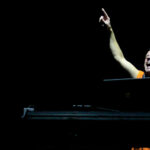The “Trump dance,” a distinctive two-fisted gesture popularized by the 45th and 47th U.S. president, has been increasingly adopted by NFL players as a celebratory move after big plays. This trend has sparked discussions about political expressions on the field and raised questions about the NFL’s stance. So, Is The Nfl Banning The Trump Dance? The answer, according to the league itself, is a resounding no.
NFL spokesman Brian McCarthy directly addressed the issue, stating unequivocally to FrontOfficeSports.com, “There’s no issue with a celebratory dance such as what took place [Sunday] or the previous week with the 49ers on November 10.” This statement clarifies that the league views the “Trump dance” as a permissible form of player celebration, similar to other spontaneous expressions of excitement after touchdowns, interceptions, or sacks. McCarthy further indicated that the decision to broadcast these celebrations rests with the television networks, not the NFL, reinforcing the league’s hands-off approach to the dance itself.
This acceptance of the “Trump dance” aligns with the NFL’s broader policy on player celebrations, which generally allows for considerable latitude in on-field expressions. While certain actions deemed taunting or unsportsmanlike conduct can draw flags, celebratory dances, even those with potential political undertones, fall within the accepted boundaries of player expression. This mirrors the NFL’s stance on more controversial displays, such as kneeling during the National Anthem. Just as players have the right to protest during the anthem, they also appear to have the freedom to engage in celebratory dances that may be interpreted as politically charged.
However, the situation becomes more nuanced when considering the reaction to discussions surrounding these expressions. The recent incident involving Raiders tight end Brock Bowers, whose post-game press conference was reportedly shut down after he answered a question about the “Trump dance,” highlights a potential double standard. This action ignited criticism, questioning why players expressing political views through dance might be treated differently from those taking a knee during the anthem, who often face intense scrutiny and are expected to explain their stance.
While the NFL rules permit the “Trump dance,” the differing reactions to discussing it versus other forms of political expression raise valid questions about consistency and freedom of speech within the league. The NFL’s official position is clear: the dance is allowed. However, the surrounding conversations reveal a more complex landscape of political undertones and the NFL’s delicate navigation of player expression in an increasingly polarized environment.

